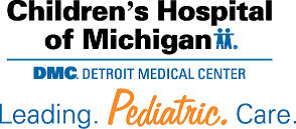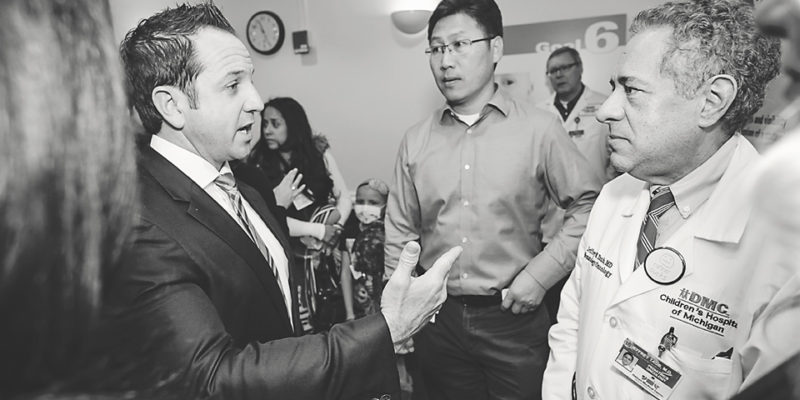 The U Can-Cer Vive Foundation contributed to Children’s Hospital of Michigan Foundation to support pediatric cancer research with the support of two grants. In the United States, more children die from cancer than any other disease.
The U Can-Cer Vive Foundation contributed to Children’s Hospital of Michigan Foundation to support pediatric cancer research with the support of two grants. In the United States, more children die from cancer than any other disease.
Every year, 15,780 young people are diagnosed with cancer and an estimated 2,000 will eventually die from it. The average age of a child diagnosed with cancer is six. Leukemia and brain tumors are the most common types of pediatric cancer. Cancer has only a short period of development in children, in contrast to adults who may be subject to a lifetime of environmental conditions that can cause cancer. Even a cancer that is found among both children and adults—leukemia—has a different molecular structure in each group.
While children suffering from more common cancers have access to breakthrough medications, children with less common cancers and recurrent cancer have fewer effective options. For these children, developing new drugs and therapies is crucial.
Unfortunately, few federal resources are targeted to developing treatments and cures for children with cancer. Childhood cancer receives less than four percent of the entire National Cancer Institute’s research budget, and pharmaceutical companies don’t commit resources to childhood cancer research. Accordingly, there is an estimated $30 million a year gap in childhood cancer research funding.
Philanthropic support from the U Can-Cer Vive Foundation will help fill this gap. Grant funding will support two research projects that focus on developing new treatment strategies for childhood cancers that currently have an overall poor prognosis. This contribution will provide funding for two research grants that will develop new treatments for acute myeloid leukemia (AML) and Neuroblastoma, two difficult to treat childhood cancers.
Acute Myeloid Leukemia (AML) accounts for 20% of pediatric leukemias and 80% of acute adult leukemias. It is responsible for 50% of leukemia deaths of American children each year despite intensive therapies and stem cell transplants. Neuroblastoma is the most common non-brain solid tumor in children, and frequently recurs after treatment.
Multiple children are diagnosed with these cancers every year at Children’s Hospital of Michigan and challenge pediatric oncologists striving to provide the most effective treatments. Dr. Jeffrey Taub and the pediatric oncologists at Children’s Hospital of Michigan and basic science cancer researchers at the Wayne State University School of Medicine/Karmanos Cancer Institute hope to develop new tools in the fight against pediatric cancer. These discoveries will benefit children here and at other leading children’s hospitals around the world, helping children and families to face cancer with hope.
Hybrid Drugs for the treatment of Acute Myeloid Leukemia (AML) and Neuroblastoma
Funding Amount $94,000
This grant will help develop new synthetic dual-acting drugs which will work as hybrids to help treat AML and Neuroblastoma more effectively.
Neuroblastoma affects about 7% of all children with cancer. There are over 700 cases each year in the United States. Neuroblastoma can begin anywhere in the body. Common sites are the adrenal glands, chest, neck and pelvis. While it may be found in only one spot in the body at the time of diagnosis in some patients, in others the cancer may have spread (metastasized) from its primary location to the lymph nodes, bone marrow, or bones. Unfortunately, more than 50% of children with neuroblastoma have “high risk” disease – an aggressive, metastasized, and extremely difficult to treat tumor. Additionally, the tumor frequently recurs even after the most intensive treatments, including stem cell transplants.
New therapies are urgently needed for treating children with AML and high risk neuroblastoma. This project will develop new synthetic dual-acting drugs which are hybrids of two drugs which researcher have identified that work synergistically [more effective in combination; e.g., 1 + 1 = 3] as opposed to only acting together in an additive effect [e.g., 1 + 1 = 2] against both AML and neuroblastoma cells in the lab. This development of dual-acting agents also ensures that both drugs reach the same leukemia or neuroblastoma cell to work effectively together to cause maximum cell death. Using AML and neuroblastoma cell lines in culture, researchers hope to demonstrate that the designed dual-acting inhibitors can provide greater growth inhibition and induce more cancer cell death than either drug alone, and may offer improved therapeutic benefits for patients with AML or neuroblastoma.
Novel Immunotherapy for the Treatment of Acute Myeloid Leukemia (AML)
Funding Amount $78,000
This grant will help develop a new approach to harness a patient’s immune system to attack AML cells.
AML is a cancer of the blood that starts in the bone marrow and spreads to the bloodstream. It is more common in adults, but also occurs in children. Bone marrow is the spongy tissue located inside the bones, where blood cells are made. Leukemia starts when young white blood cells, called “blasts” develop a series of mutations that allow them to multiply uncontrollably. Eventually, these leukemia cells accumulate and crowd out normal cells in the bone marrow (white blood cells, red blood cells, and platelets) that the body needs.
Researchers know that on the surface of these abnormal AML cells are proteins (known as antigens) which are not present on normal blood cells. Antibodies (which normally protect the body from infectious agents) can be developed which specifically target these leukemia-specific antigens. This project will develop antibodies which can selectively seek out and kill leukemia cells by binding to the leukemia-specific antigens on their surface. By linking an antibody to a toxin, researchers hope to enhance the ability of the antibody to kill leukemia cells. This approach has been successful in treating breast cancer, where the toxin linked to the antibody enters into the cancer cell to cause the cell to die. Researchers hope to duplicate the success of this approach in AML. These toxin-linked antibodies will be tested for their anti-leukemia activity against pediatric AML cell lines in cultures along with patient AML cells which are obtained and stored frozen at the time of diagnosis. Researchers hope that this novel approach will potentially lead to new treatments which can directly be applied to treating children with AML and improving their cure rates.



